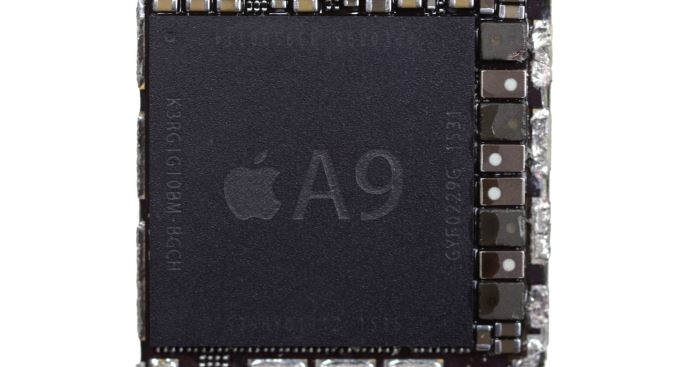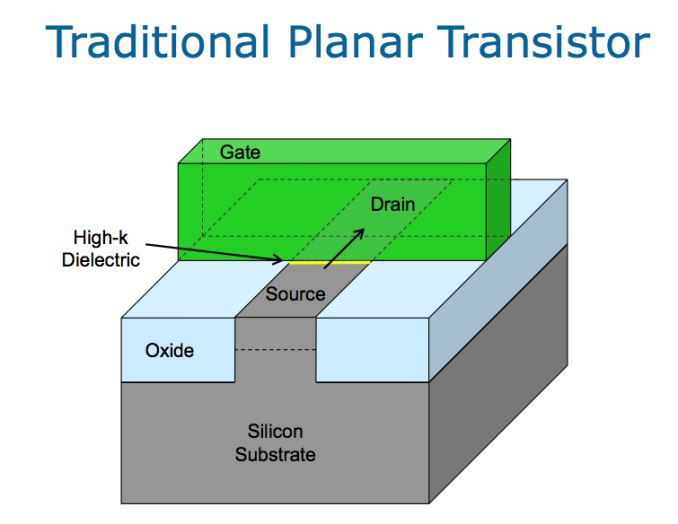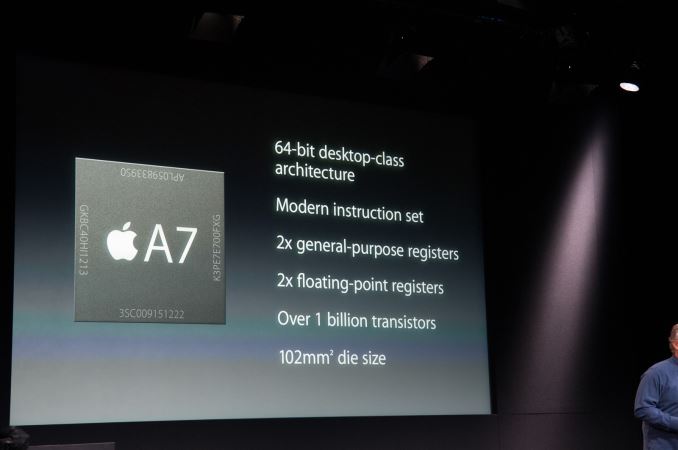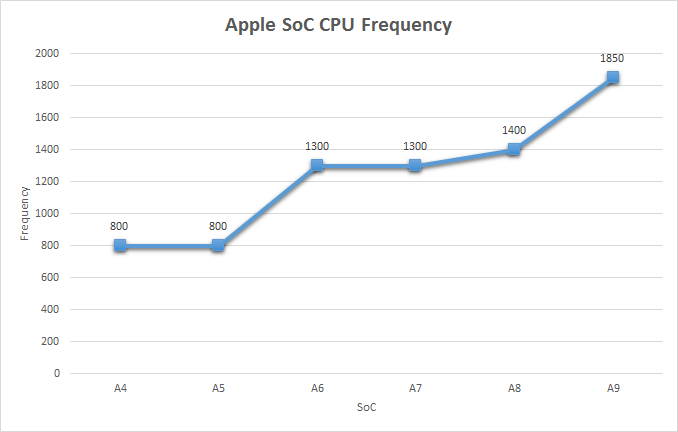The Apple iPhone 6s and iPhone 6s Plus Review
by Ryan Smith & Joshua Ho on November 2, 2015 8:00 AM EST- Posted in
- Smartphones
- Apple
- Mobile
- SoCs
- iPhone 6s
- iPhone 6s Plus
Analyzing Apple A9’s SoC
For Apple’s engineering teams, I’m still undecided whether Apple’s tick-tock style of SoC development is a curse or a blessing. That Apple more strongly invests in SoC development for the iPhone-S processors is a blessing, as it gives the engineering teams a bit of time to breathe and to plan out major architecture shifts over two years. On the other hand even for non-S iPhones the engineering teams still need to deliver an amazing product – iPhone 5 and iPhone 6 were no slouches – so I’m not sure how much of a breather the engineering teams actually get. They may have two years to space some of their transitions, but they must continue to deliver a top-tier SoC every year.
When Apple released the A7 SoC alongside the iPhone 5s in 2013, they pulled off something that rocked the SoC industry. The Cyclone CPU core all but came out of nowhere, beating previous estimates for the first ARMv8 64-bit phone SoCs (by any vendor) by roughly a year. As a result the 64-bit transition became a lot more important a lot sooner than anyone was expecting, and to this date some of Apple’s SoC competitors are still trying to recover from the shock of having to scramble to go 64-bit sooner than they planned.
As for Apple’s engineering teams, that we’re on another iPhone-S year means that there’s quite a bit of pressure to pull off a repeat performance, and I suspect that pressure is internal as much as it is external. A7 brought with it Cyclone, a CPU that was not only 64-bit, but thanks to its exceptional (for a mobile CPU) issue width of 6 micro-ops, brought with it a huge jump in single-threaded performance. At the same time A7 also saw Apple transition to PowerVR’s Rogue architecture GPUs (PowerVR G6xxx), which was a similar jump in GPU capabilities and performance, along with setting the stage for Apple’s proprietary, low-level Metal graphics API. A7 was everything Apple needed and more, cementing Apple’s place as a top-tier SoC designer and laying the groundwork for the performance advantage Apple has enjoyed over the past two years.

Apple's A9 SoC (Image Courtesy iFixit)
For 2015 then and for their latest iPhone-S, Apple has once again turned out a new SoC. This brings us to the A9, and in a year with an iPhone-S and almost no external design changes to speak of, all eyes are on what Apple has devised to go inside their phones.
| Apple A9 vs A8 SoCs | ||||
| Apple A9 (2015) | Apple A8 (2014) | |||
| Manufacturing Process | TSMC 16nm FinFET / Samsung 14nm FinFET |
TSMC 20nm HKMG | ||
| Die Size | 104.5mm2/96mm2 | 89mm2 | ||
| CPU | 2 x Apple Twister ARMv8 64-bit cores |
2 x Apple Typhoon ARMv8 64-bit cores |
||
| GPU | IMG PowerVR GT7600 | IMG PowerVR GX6450 | ||
Finally Fabbed with FinFETs
When the iPhone 6 launched I spent some time talking about how for the A8 SoC, Apple finally reached the point where they were building SoCs on a leading edge manufacturing process. That process at the time being TSMC’s 20nm planar process. The fact that Apple was building on a leading edge process was important for two reasons: 1) It was a strong indicator of how serious they were about SoC production and how much they were willing to spend in order to achieve the best possible performance, and 2) it meant that Apple had finally completely climbed the ladder (so to speak) and wouldn’t be able to “exceed the curve” just by catching up on manufacturing technology. Post-A8, Apple can only improve their performance by improving their architecture, building bigger chips, and finally, jumping to newer manufacturing processes as they become available.
What wasn’t said at the time – due to the fact that no one outside the fabs was quite sure – was where Apple would go in 2015. Had you asked me in 2014 what I would expect the A9 to be fabbed on, I would have suggested another round on TSMC’s 20nm process now that Apple had caught up to the leading edge. However much to my surprise (and to a steak dinner I lost a bet on) Samsung was able to get their 14nm FinFET process yielding well enough to supply Exynos 7420 in bulk for the Galaxy S6 launch nearly 6 months ago.
The fact that one of the contract fabs was able to get a FinFET process up and yielding well enough for volume production before the very end of 2015 has definitely changed the picture for what Apple can do. Once again they get to jump to a new manufacturing process for their next SoC, though this time by staying on the leading edge.


Planar vs. FinFET (3D) Transistors (via Intel)
While I’m not going to go into the physics of FinFET in depth here – we have some great articles on that already – I do want to quickly touch upon why this is so important. 14nm (and 16nm) FinFET isn’t just a new manufacturing node, but it’s part of a broader change in how transistors are manufactured. Simply put, FinFET (aka 3D transistors) are a long in development technology meant to help transistors scale to increasingly small scales, on the order of dozens of atoms or less.
FinFET transistors are necessary because as transistors get smaller their leakage (wasted power) goes up, and without FinFETs leakage would spiral out of control. In fact that’s exactly what happened on the 20nm nodes from Samsung and TSMC; both companies thought the leakage of planar transistors could be adequately controlled at 20nm, only for leakage to be a bigger problem than they expected. Due in large part to this reason, the 20nm SoCs released over the last 18 months have more often than not struggled with power consumption and heat, especially at higher clockspeeds. Apple is something of the exception here, with the 20nm A8 proving to be a solid SoC, thanks in part to their wide CPU design allowing them to achieve good performance without using high clockspeeds that would exacerbate the problem.
That said, while Apple managed to handle 20nm well enough, they were still ultimately at the mercy of a subpar process. The 14nm/16nm FinFET processes are what 20nm should have been all along, with the use of FinFETs drastically cutting down on leakage and reducing operating voltages – and now that FinFETs are here Apple no longer has to be as conservative as they were with A8. What that gives Apple then is a chance to push the envelope much harder on clockspeeds, taking their already wide CPU designs and turning up the clockspeeds as well.












531 Comments
View All Comments
Der2 - Monday, November 2, 2015 - link
Its about time.zeeBomb - Monday, November 2, 2015 - link
Oh man...oh man it's finally here. I just wanted to say thank you for faithfuflly using all your findings to incorporate this review. It may have take a little longer than expected, but hey, this is my first anandtech review that I probably camped out for it to drop, lol...thanks again Joshua and Brandon!zeeBomb - Monday, November 2, 2015 - link
Ugh. I meant Ryan Smith...sorry! Waking up at 5 isn't the ideal way to go...Samus - Thursday, November 5, 2015 - link
That's what she said, Der bra.zeeBomb - Sunday, November 8, 2015 - link
Very valid point. Speaking of valid points... 500!trivor - Thursday, November 5, 2015 - link
Have to disagree with your statement that the high end Android phone space has stood still. With this round of phones the Android OEMs have all upped their game to approximate parity with the iPhones and in some cases exceed the performance and quality of images taken by an iPhone. In addition, on phones like the LG G4 the option of having manual control of your picture taking and supporting RAW/JPEG simultaneously is a huge advance for smartphones. Add to that, phase change focusing, laser rangefinder for close focus, generous internal storage (32 GB) and micro SD expansion (which works quite well on Lollipop - not sure about Marshmallow yet) you have a great camera phone. It also has OIS 2.0 (whatever that means) at a significantly lower cost than even the low end (16 GB) iPhone 6s @ $450-500 for the G4 versus $650 for the iPhone. While iOS seems to get apps updated a little quicker, look nicer from what I've heard and seem to be a little more feature rich. Conversely, the Material Design language has greatly improved the state of Android interfaces to give Android OEMs a much more stable OS - although the first builds of Lollipop were not ready for prime time. Also, let's not forget that Android dominates the low - middle range of Smartphones below $400 with near flagship specs, excellent cameras in phones like the Motorola Style (Pure Edition in the US), Motorola Play (is apparently the base model for the Droid Maxx 2 for Verizon, a number of the Asus Zenphones, the Moto G and E. Also, the new Nexus' (6P and 5X) are both competitive across the board with new cameras with 1.55 micron pixels that let in significantly more light than the 1.12 pixels in other cameras, are competitively priced (especially the 6P @ $499), and are overall very nice handsets. Finally, the customizability and wide variety of handsets at EVERY PRICE POINT make Android a compelling choice for many consumers.Fidelator - Friday, November 6, 2015 - link
I couldn't agree more, the Android space has not stayed still, if anything, most of the problems on that side were due to Qualcomm's lack of a good offering this year, still, the phones were further refines in other areas, saying this is overall the best camera phone given the only advantage it has over the competition is reduced motion blur is complete bull, the UI is far from the best given that auto on both the SGS6/Note 5 and the G4 is as effective yet those still offer great manual settings.The -barely over 720p- display on the 6S is inexcusable for 2015 and given the starting price of the 6S should not be passed as an acceptable not even as a good display.
Where Apple deserves credit is with the A9, it is miles ahead of anything the competition currently offers, they have made some fantastic design choices, it just is on the next level.
robertthekillertire - Monday, November 9, 2015 - link
I'm actually very happy with Apple's decision to stick with a lower-resolution screen. Which would you rather: a smartphone with an insanely high pixel count that your eyes probably can't appreciate anyway, or a smartphone with a lower PPI (but barely perceptibly so) that gets better battery life and has smoother UI and game performance because it's not trying to push an absurd number of pixels at any given moment? The tradeoff just doesn't seem worth it to me.MathieuLF - Tuesday, November 10, 2015 - link
But your eyes can tell the difference... When I had my iPhone 6+ and Nexus 6P side by side I can see it right away that the Nexus has more pixelsCantona7 - Tuesday, December 1, 2015 - link
But the difference is not large enough to justify heavier power consumption and greater graphics requirement. I agree that more pixels is certainly more pleasant to the eyes, but I'd rather greater battery life. If the Nexus 6P had a lower resolution screen, it would have a even greater battery life which would be awesome